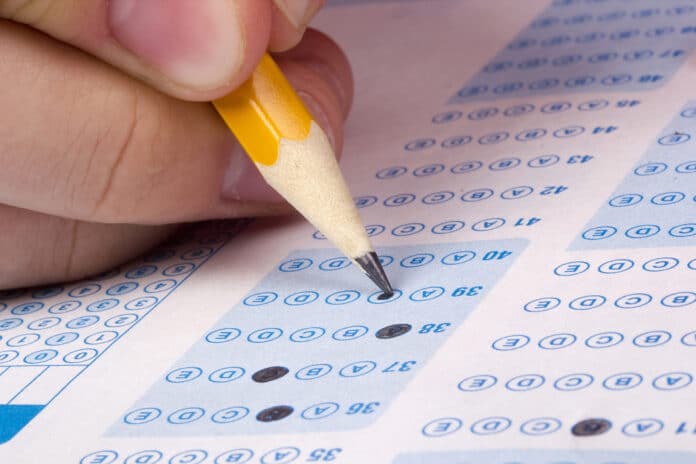A majority of Minnesota students can’t read or do math at grade level, showing that, three years post-pandemic, Minnesota public education is still struggling with underperforming schools.
Of students who took the Minnesota Comprehensive Assessment (MCA) and the Minnesota Test of Academic Skills (MTAS), 50.1 percent were not proficient in reading and 54.5 percent were not proficient in math, according to an August press release by the Minnesota Department of Education (MDE).
“For the first time, since I have tracked test score results, Minnesota has both a majority of students who can’t read or do math at grade level. In years past, we have had a majority of students who couldn’t do one or the other. Now it’s both. That is very telling,” said Catrin Wigfall, a fellow at the the Center of the American Experiment.
Wigfall said it’s also “telling” that the MDE released test results by combining both the MCA and MTAS. “I don’t want to assume but reporting them together actually shows proficiency a smidge higher than if they were just to have reported the MCA test results,” she said.
The MTAS is used to test students who have Individualized Education Plans (IEPs) or have significant cognitive disabilities.
Under state law, Minnesota is responsible for providing a thorough and efficient education, regardless of student barriers, Wigfall said.
Math proficiency has hit a stunning low as 75 Minnesota schools reportedly have zero students proficient in math.
The results confirm the need for continuing support for educators and students and “underscores” the need for the additional funding legislators allocated to education last session, said Education Commissioner Willie Jett in the press release.
The decline in test scores existed pre-COVID.
“They were certainly exacerbated by school closures, but this has been a long term trend in the state. When are we going to finally hold the state and the school system accountable for leaving students behind?” Wigfall said.
“The state will not shy away from what the data are telling us,” Jett commented in the press release.
House Democrats allocated $2.2 billion in additional funding for Minnesota public schools.
“How do we know that these dollars will do what previous increases to education funding haven’t been able to do in the past?” Wigfall said. “That’s the question that the Department of Ed has to answer,. If their response is going to continue to be more money, we’ve done more money. And who’s paid the price for that? Students, because they were still left behind.”
Wigfall said how dollars are spent is more important than how much is spent.
“We know from other states who are recovering faster from learning loss such as Mississippi that how dollars are spent matters far greater than how much is spent. This idea that we just need more money has been proven to not be the answer in the past. I fear that it will continue to prove that way,” she said.
She said taxpayers have no guarantee that the the allocated dollars are actually being spent on students who need them the most.
“We need to trust families to direct those dollars to services and education, learning environments that will best meet the needs of their child,” she said.
Sheila Qualls
Sheila Qualls is an award-winning journalist and former civilian editor of an Army newspaper. Prior to joining Alpha News, she was a Christian Marriage and Family columnist at Patheos.com and a personal coach. Her work has been published in The Upper Room, the MOPS blog, Grown and Flown, and The Christian Post. She speaks nationally on issues involving faith and family.

















